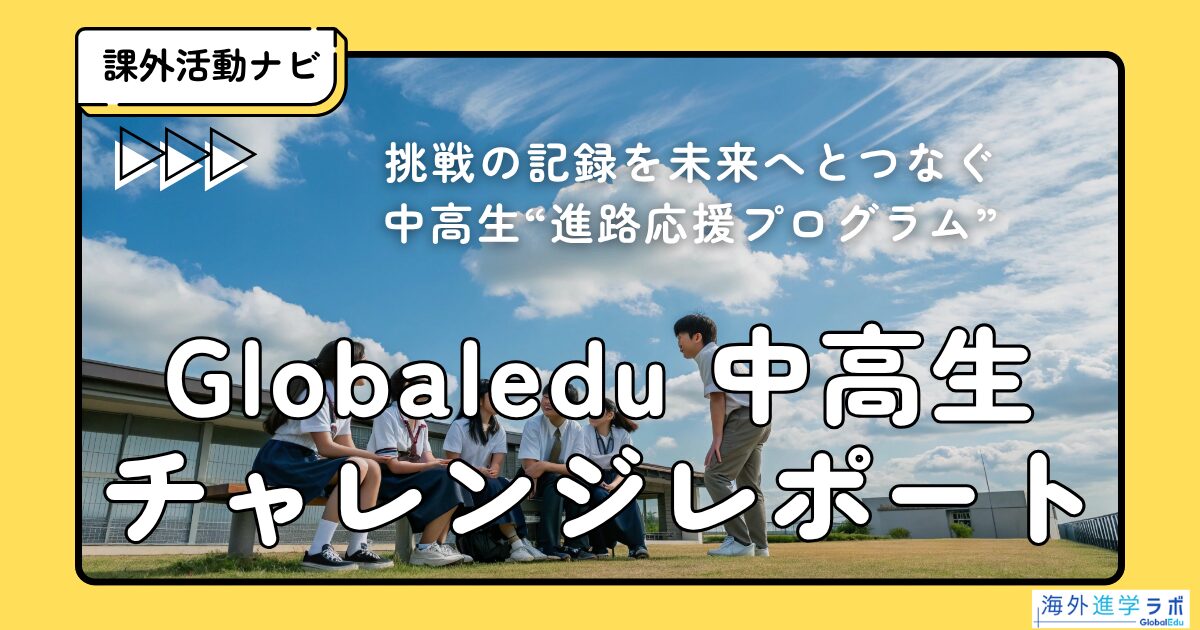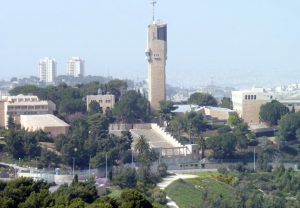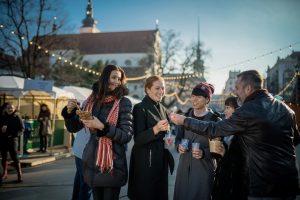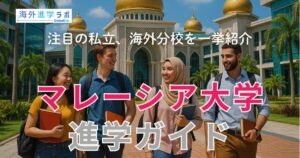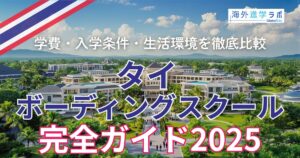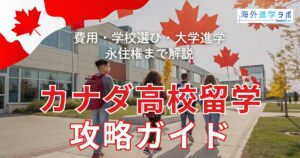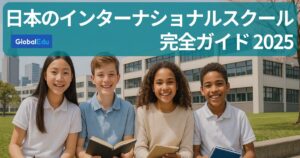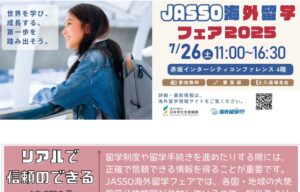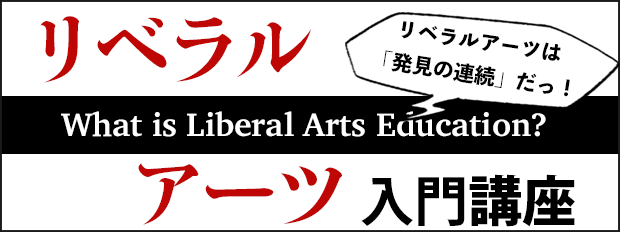
- 【リベラルアーツ入門01】鉛筆からはじめるリベラルアーツ
- 【リベラルアーツ入門02】リベラルアーツで身につける思考法
- 【リベラルアーツ入門03】リベラルアーツ教育を受けた後の変化
- 【リベラルアーツ入門04】日本の高校生とリベラルアーツ
- 【リベラルアーツ入門05】大学を終えたあとの学びの実践
4回目の更新から1年近くが経ってしまいました。筆者の個人的な事情に加えて、最終回(5回目)の「今後の教育の課題」という大きなトピックを、筆者が自分自身に課してしまった故の遅延です。最終回をお待ちいただいていた方もいらっしゃるかもしれません。大幅に執筆が遅れてしまったことをお詫び申し上げます(青木光太郎)。
人生の目的地へと導くのが「教育」の役割
アメリカの高等教育の伝統として実践されている「リベラルアーツ教育」について、これまで4回に渡り書いてきましたが、今回はこれまでの内容を踏まえて、リベラルアーツ教育が現代の教育また社会の文脈においてどのように生かされるか、それに加えて、教育全般の考察をまとめます。
大きなトピックですので、できるだけ焦点をしぼって書いていきます。
まず、教育とはなんたるか、その本質を考えてみましょう。
世の中にはさまざまな教育がありますが、すべてに共通するのは「人をある地点から別の地点、目的地に向かって導く」という点です。つまり、教育とは「目的地への橋渡し」のことです。

橋を渡す目的地の決定は、年齢や興味関心、そして生活における必要など、個人が人生のどの地点にいるかによってさまざまです。
単純な例としては「日本の義務教育制度」があり、それぞれの年齢区分で子どもが到達すべき目的地が設定されています。年齢が上がると、高校では理系や文系、大学では学問の専攻、その他の専門的なスキルの養成など、教育が提供する目的地の幅が広がり、生徒に選択の自由も与えられます。
さて、教育というものが地点と地点をつなぐ橋渡しだとすれば、最終的にこの橋はどこに人を導いていくのでしょう? つまり、教育の最終的な目的地はどこなのでしょうか?
高度な技能を持つ専門家の養成でしょうか? 安定した収入が得られる会社への就職でしょうか?
このシンプルな質問への答えは、とても大事です。個人の人生と社会の行き先が左右されると言っても過言ではありません。
詭弁のように響くかもしれませんが、教育の最終目的地は「人が自ら教育の最終目的地を決められるようにすること」だと私は考えます。
教育のある地点を過ぎれば、私たちは自分自身で目的地を決定して、自らを導いていかなければなりません。この短い生において、どのように目的地を定めて、そこに向かって自らの資源と経験を集約させるか。だれも私たちに代わって、この選択と決定をすることはできません。
そのために、ここでカギとなるのは「目的地を選択する自由」、そして「この自由を駆使して目的地を決定する能力の養成」です。教育が提供できる最終目的地は、これらを個人に教えることにあるのです。
これはそのまま、リベラルアーツ教育の本質につながります。
リベラルアーツ教育が養成する力とは?
リベラルアーツ教育は「人間」をその教育の根幹としています。
「人間」というものは、自らの目的地を決定できる自由と能力を持つことによって、他の存在とは一線を画しています。そして、この「人間」という最終目的地は、いまだに決められた場所ではなく、いまを生きる私たち一人ひとりのあり方によって作られています。そんな「人間」の存在を新しく、自由なものにしていくことがリベラルアーツの教育の理想です。
そのため、この教育においては、ある地点から別の地点へと個人が橋渡しをするために必要な知識や能力が、教育の焦点となります。前回までで紹介した「古典教育」「全人的教育」「批判的思考」「論理的思考」はこのためにあるのです。
リベラルアーツ教育の構成要素をふたつのグループにわけると、「目的地を探すための地図」と「道を進むための道具」となります。地図は古典教育と全人的教育で、道具は批判的思考と論理的思考です。
そもそも目的地を自由に選択するために、学生たちは自分自身と世界を見渡す地図を必要とします。この地図を得るために、古典教育は、常識や慣習に形成されている学生の限定された見方を意識的に広げるとともに、時代を超えて受け継がれる歴史と伝統のなかに自らを見出すのを助けるものです。

全人教育においては、世界を構成する知識や文化をバランスよく学び、自らの興味関心や適性を吟味します。リベラルアーツ大学では、最初の2年間は専門を決めなくてもいいのはこれが理由です。
このように時間的にも空間的にも縦横無尽に広がる地図は、目的地を吟味して、新たな目的地を発見する自由と可能性を学生に与えます。
しかし、たとえいい地図を得たとしても、実際に目的地へと向うためには、地図を読めるようになり、道路標識の真偽を判断して、自らの足で進んでいかなければなりません。道は長く、間違った道路標識や出処不明な噂など、個人の歩みを惑わす情報に溢れています。ここで批判的思考と論理的思考が必要となります。
これは学びのための媒体ーー本、映画、ダンスなどーーの前提を疑い、論理の整合性を試すことで、それぞれの情報がどのような歴史的文化的限定のなかで作られたものか、自らの目的地の探求にどう関わるものかを知るものです。
また、自分の考えを文章にまとめ、これに加えて他人との議論を重ねることで自分の世界や自分自身に関する前提、論理を疑い、精査することになります。こうして基礎的な能力を身につけ、しっかりとした足取りで学生たちは目的地へと向うわけです。
「誰か」が設定した目的地は盲信するな
このような立場に対して、教育から短期的な成果を求める人から反対の声があるかもしれません。現代のように行き先が見えない世の中においては、教育から短期的な成果を求める声が影響力を強めています。
そのために、個人以外の誰かーー親、学校、会社、社会ーーが、直接的または間接的にしろ、教育の橋渡し先の設定を行うようになってしまいます。
経済成長のために「起業」や「プログラミング」を幼いころから子どもに教え込む風潮は言わずもがな、現在はこのような傾向が教育の各方面で見られます。そして、大人の期待に敏感な、とくに能力が高いとされる子どもたちほど、この短期的な教育に影響されてしまいます。
しかし、個人の人生、そして本当の意味での社会の成長を考えれば、長期的な時間軸で教育に向き合わなければならないのは明らかです。また、先行き見えない世界であればこそ、現段階で想像される近未来像をもとに、自分以外の誰かが決定した目的地を盲信するほど愚かなことはありません。
これまでにないほど世界がつながり、変化に富んでいる世の中において、どのように目的地を定めるかは個人の力量に任されています。そうであれば、個人が目的地を探すための地図、そして道を進むための基礎的な能力の養成こそが、これからの教育において焦点となるべきでしょう。
リベラルアーツ教育といえど万能ではない
さて、リベラルアーツ教育が橋渡しをするための地図(古典教育、全人的教育)と道を進むための基礎的な能力(批判的思考、論理的思考)を与えるものだとしても、これだけでは不十分だと私は考えています。
地図と基礎的な能力のほかに、橋渡しをしていくためには個人に何が足りないのでしょうか?
もちろん、専門教育や実践的スキルの養成などではありません。専門教育や実践的スキルの養成は人が橋渡しをする目的地への経由点に過ぎず、興味関心または必要に迫られて、自ずから選ばれるものでしょう。
橋渡しのために欠かせないものは、外面ではなく「内面」にあります。それは、個人が行き先を判断するための「コンパス」です。地図を得て、道案内の情報を読めるようになっただけでは、無数にある道からどれを選べばいいのかはわかりません。

むしろ広い地図を持ち、利用できる情報が増えれば増えるほど、最終目的地の方向へと針を指し示すコンパスの存在が欠かせなくなります。
それでは、このコンパスはどうすれば手に入れられるでしょうか? この答えは「内面的な教育にある」と私は考えます。
内面的な教育というと、哲学や心理学、文学などを連想するかもしれません。これらは有益ではありますが、すでにリベラルアーツ教育のなかに含まれており、その可能性は限定されています。ここでいう内面的な教育は、もちろん道徳教育のようなものでもありません。
この内面的な教育とは、「自らを観る眼の養成」のことです。単純に言えば、「自らを観る眼の養成」とは自分の根幹にあるものと対話する手段のひとつです。誰もが人生のなかで、一度は自分自身と対話したことがあるでしょう。
たとえば、良心に背くような選択を迫られたとき、私たちはその行動の是非を自らに問いかけます。このとき、私たちは「観る自分」と「観られる自分」を体験しています。このような体験を可能にする自意識の核にあるものが、自らを観る眼です。
古今東西の人間の生活史には、この眼がどれだけ人の生に欠かせないものであったかが示されています。社会では宗教が自らを観る眼を養成する役割を担ってきましたが、なかでも東洋の伝統は高度にシステム化されており、人間の内面を知るために特化された認識の方法を生みだしました。
私たちに近い例では、インドから中国、そして日本に伝来して発展した禅仏教が有名です。
コンパスを手に入れるための学びとは
リベラルアーツ教育はもちろんながら、経済的な先進国に生きる私たちは、基本的に西洋の知識のあり方をもとに教育されています。
それは科学的手法を基礎として、観察、概念形成と要素分解、そして因果関係の確立から得られる知識です。この知識の方法、西洋的知性が私たちの外にある世界を知るためには最適な手段であると近代の歴史は示しています。
この西洋的知性をもとにした教育の成果は、外部に存在するものと私たちの知識がどれだけ一致するか、得た知識によって外部の世界をどれだけ操作できるかによって測られます。
しかしながら、このような教育は、私たちの内面に向う方法を教えることはできません。外面の世界へと意識を向けさせるのが西洋的知性の特徴のため、結果として、あたかも外に私たちの求めるべきものがあるかのように人々を教育してしまいがちです。
心理学や哲学などの学問も、私たちの意識を向けるべき対象を考えさせる点では役に立ちますが、根本においては概念をもとにする方法であり、これは外面に対して用いられる認識の仕方をそのまま内面に用いているにすぎません。
内面の教育のためには、外に向けられる眼とは異なる、内に向けられる眼に特有の認識と理解の仕方が必要になります。それは分解と分析ではなく「統合と直観の世界」です。禅、ヨガ、その他の一部の東洋の武道、芸能や芸術の伝統は、そのための知識の宝庫です。
東洋の知性が「自らを観る眼」を養う
東洋の知性は、流れのなかに見出されます。鴨長明の言葉を借りれば、「ゆく河の流れは絶えずして、しかももとの水にあらず」で、あらかじめ思考された概念を用いて捉えようとすれば、流れる水は私たちの手をすり抜けてしまいます。これは西洋の知性と対照的です。
有名な「我思う故に我あり」というデカルトの言葉に代表されるように、西洋の知性は思考と概念から全てがはじまります。疑い、そして考える自我とその他の存在の間には境界線が設定されており、西洋的知識の大元はこの境界線を洗練することにあります。
ここでは標準化された概念によって流れる水の一部を汲み取り、この水、固定された現象を理解しようとします。川を流れる水はおおよそ変化しないという前提を以て、汲み取られた水を要素分解、分析して、これを川の水の知識とします。
思考と概念によって固定、分解のできる現象に関しては(少なくともこの過程で得られる知識の用途を考える限りにおいて)西洋の知性はその目的を果たします。しかし、私たちが今この瞬間も体験しているように、私たちの意識は絶えず止まることなく続く流れです。個人個人に異なる意識の流れがあり、同じ流れのなかでも、ある瞬間から次の瞬間には違う水が流れています。そして、複数あるように見える流れも、本当はその流れをわける境界すら存在しないのかもしれません。
この持続する流れ、生きられた人間の意識という現象は思考と概念を以っては「知る」ことができないものです。あらかじめ思考された概念で流れを固定するのではなく、東洋の知性は空の精神をもって流れを直観します。そして意識と思考対象の間にある境界線、数多の概念を取り払い、本来はひとつの流れであるはずの複数の流れを統合させることが東洋的知性の目標地点だと言えます。
このように、思考や概念によって自分という流れを固定、分解、分析するのではなく、生の流れの真っ只中にある自分を観て、ただ在ることが東洋的知性の教えるところです。これこそが「自らを観る」そして「知る」ということであり、先の見えない橋でも渡っていくためのコンパスとなるものです。そして究極的には、人間が追い求める最終目的地、いわゆる幸福や意味という永続的な主題への答えも、磨き抜かれたコンパスの針の先に示されていくものなのでしょう。
「内と外の両面が澄んだレンズ」を手に入れよう
日本を含む現代の経済的先進国では、無宗教もしくは宗教に対する無関心が常識となっています。歴史的に組織的宗教が犯してきた政治との癒着や組織の腐敗、科学的手法に反する宗教的見方、資本主義経済と相容れない価値観など、現代社会が宗教を拒絶するに至った理由は山のようにあります。
しかし、上にも書いたように、組織的宗教の役割が大多数の人々の生活からなくなったからといえども、宗教が担ってきた内面的教育への必要がなくなるわけではありません。
むしろ、選択肢が増えて不確実性が高まっている世の中でこそ、自らを観る眼の必要性が高まります。米国カリフォルニア州を発祥とする、テクノロジー業界を中心とした瞑想やヨガの流行りなどはこの現れだと言えます。
たとえどれだけ人々が無宗教になったとしても、私たちの意識の根本である自らを観る眼の必要性はなくならず、この眼は磨かれなければ曇ってしまうのです。
人間は外の世界に関しての知識を発展させ、生活を向上させる技術を開発してきましたが、その意識が外へ外へと向うほど、内面にある自分自身に関する知識から離れてしまいました。どれだけ外の世界に関する知識と技術を蓄えようとも、人間が変わらなければそれは宝の持ち腐れになってしまいます。
そして皮肉なのは、外向きの意識とその知識、技術を世界に広げてきた欧米諸国の人々のほうがこの限界を意識していて、積極的に東洋の知識を吸収しようとしているのに対して、日本を含める東洋の国々の人々は、往々にして自らの伝統とその価値に盲目であり、いまだに外向きである姿勢が変わらないことです。
リベラルアーツを含めた欧米諸国の知的伝統は、私たちに多くを教えてくれます。しかし、この外に向く眼の教育を行いつつも、内面に向かう眼の教育を、とくに東洋諸国に生きる私たちはいま一度考え直さなければならないでしょう。
これからの私たちに必要なのは「内面と外面の両方向に澄んだレンズ」なのです。
人生は学びの実践そのもの
さて、ここまで書いてきたことをまとめます。
まず、教育とはある地点から別の地点へと個人を橋渡しすることであり、その最終目的地は、個人が自らの最終目的地を決められるように教育することです。そして、このためには良い地図と情報を判断する能力、なによりも、方向を指し示すコンパスが必要です。
リベラルアーツ教育は前者のふたつを核とする教育であり、そして、最後のコンパスは現代の教育のなかではもっとも見逃されている点です。今後の教育はこの3点を核になされるべきだと私は考えています。
しかし、ここで注意していただきたいのは、私が「学校」という言葉を使っていないことです。
なぜならば、上に何度も書いたように、教育の最終目的地は子どもが自らで決めるものであり、それは学校教育が終わったあとも続いていかなければならないからです。むしろ、学校が終わってからこそ、本当の教育がはじまると言ってもいいかもしれません。
もちろん特定の種類の学校は、ここで書かれているような教育の大きな助けになることができます。それだとしても、学校は補助であり、最終的に子どもが自らを教育していけるようになることがゴールであるのは変わりません。
私がアメリカのリベラルアーツ大学である「ウェズリアン大学」を卒業して、2年が経ちました。どれだけ意識的に目的地を定め、自らを教育していくことが難しいかーー日々それを学んでいます。
ともすれば世の網にとらわれ、自らの目的地へ向う道から知らず知らずのうちに離れてしまいます。また、コンパスが曇るに曇って、針の指す方向が見えなくなることもあります。
そんな自分を意識して、内面を観る眼を澄まし、醒めた頭で目的地へと向かおうとする行為そのものが、教育の実践だと私は考えます。
これは生徒も教師も、人間であるすべての人々が行うことであり、お互いの実践から私たちは学ぶことができます。そして、個人個人が自らの最善とする最終目的地へ向かうようになってこそ、社会全体もあるべき姿に成っていくものでしょう。
* * *
本連載はこれで終わります。長い空白期間にも関わらず、最後まで読んでくださった読者の方々にお礼を申し上げます。
連載を通して、私は自分の受けた教育の意味を改めて省察して、教育への理解を深めることができました。読者のみなさんにとっても、本連載がリベラルアーツ教育、そして大きな意味での教育を考える材料となれば幸いです。
これからも筆者の探究は続きます。そのなかでまた文章を書くことがあるかもしれません。それでは、そのときまで。
千葉県旭市出身。小中高大(大学1年目の数週間)と日本の教育を受けたのち、2012年にアメリカ・コネチカット州のリベラルアーツ大学である「ウェズリアン大学」に入学する。ウェズリアン大学では欧米哲学を専攻する。2016年に大学を卒業した後は、グローバル投資運用会社からバーの皿洗いまで職を転々とする。当初の予定であったアメリカの大学院への進学の代わりに、アジアからヨーロッパに至る放浪の旅を2018年春にはじめる。現在はインドで「インド哲学」とその実践を学んでいる。変わり続ける世界のなかで変わることのない真理を知り、生き、教えるのを人生の仕事とする。翻訳で生計を立てており、それ以外の時間は鍛錬か研究をしているか、もしくは竹を吹いている。2019年の初春頃に内面的教育を主眼に置いた活動「Sadhana Bridge」を創始予定。筆者への質問、感想、その他の問い合わせは ko.ao.2164@gmail.com まで。
[Liberal Arts 05] Education as Bridge Building: Liberal Arts and Inward Education
My sincere apologies for the late update. The delay was due to my personal business and the choice of the subject matter that I have assigned for this article, which is ambitious and general–the education of tomorrow.
- [Liberal Arts 01] Liberal Arts Starting from a Pencil
- [Liberal Arts 02] Thinking Method to be Acquired by Liberal Arts
- [Liberal Arts 03] Changes after Graduating from Liberal Arts Education
- [Liberal Arts 04] Japanese High School Students and Liberal Arts
- [Liberal Arts 05] Learning after Finishing College
Author: Kotaro Aoki
Education as Bridge Building
In the last four articles, I have been writing about different aspects of liberal arts education in the United States, especially at its so-called elite private universities. Since this is the last article of the series, I want to contextualize what I have written so far within today’s world and its need for higher education. From there, I will venture to elaborate on my thoughts on education in general. This is a very ambitious theme, thus I shall focus on essential parts so I won’t waste your time.
First, let us examine the essence of education. There are myriads of education out there. What they all have in common is that their essential aim is to lead students from one point to another, namely, their choice of destination. In essence, then, education is about building a bridge. The choice of destination for a bridge initially depends on where students are in their life stage. The deciding factors are things like age, interests, needs, and etc., Here, let us take the case of the mandatory education system in Japan. In this system, age is the primary deciding factor in the choice of destination for students. Destination, namely levels of achievement in each subject, is mostly predetermined and categorized by age groups. As students grow in age, they are given more freedom and options to decide their destination–whether they want to choose the science or humanity path, what major they want to choose, what professional skills they want to acquire, and etc.,
Then, if education is about building a bridge from one point to another, where is this bridge, or a sequence of bridges, eventually going to take students? That is, where is the final destination of our education? Is it training of highly skilled specialists? Or, is it guaranteed employment at well paying company? Our answer to this simple question is more important than it may seem. It will determine the course of our individual and growth of society.
It might sound like I’m playing with words, but I argue that the final destination of education is to enable students to decide their own final destination of education. After a certain point, we must decide our destination in life on our own, and direct ourselves toward that point. In this life, how could we direct all the resources and experience at hand toward that one point, without wasting ourselves away? No one else could do this on our behalf. Then, the key here for education is to develop an ability to exercise freedom and choose one’s own destination. In this sense, the final destination of education–where education shall take students in the end–is to teach that ability to students.
What Does Liberal Arts Teach?
This takes us straight to the essence of liberal arts education. Liberal arts education by its very principles revolves around the core concept of human beings. Human beings are unique in the sense that they alone can have freedom and ability to choose their own kinds of being. And the final destination for human beings still remains indeterminate, toward which all of us contribute, whether knowingly or unknowingly. And liberal arts education is meant to widen and free human beings as such. For this goal, liberal arts education emphasizes knowledge and ability that are necessary to make a bridge from one point to another. The four constituents of liberal arts education–liberal education, classic education, critical thinking, logical thinking–all exist for this one goal.
Let us categorize these four constituents into two groups to fit the context of this article. On one hand is a map that locates different destinations; on the other hand is a toolkit for navigation on the way. First, students must get a map within a big and flexible temporal and spatial frame, so that they could be freed to choose their own destination. In classic education, the first item for this map, students are made aware of their own historical and cultural conditioning, by having a broad range of exposures to the world classics. This also helps students see themselves in the broader context of time and space. In liberal education, the next item, students study across a wide range of disciplines that are largely divided into three groups–humanities and arts, natural science, social science–that consist of the world we live in. While mapping the world through it, students also map themselves, by reflecting on their preferences and interests arching different fields of study, so that they can think through their destination from multiple perspectives. Such map of the world and themselves, expansive and flexible in time and space, gives freedom and possibilities for students to contemplate and explore different destinations.
However, a good map is just useless, unless students know how to read the map. Obscure road signs and misleading information are on the road of life. This road is long and intricate, and yes, freedom comes with risk and responsibility. Here comes the need for critical thinking and logical thinking. At liberal arts college, students study various mediums–book, film, dance and so on–to question underlying assumptions and hypothesis, and challenge logical consistency. This trains their ability to analyze historical, cultural and scientific paradigms behind information. Students learn to discriminate relevant information from irrelevant information. Moreover, by writing and discussing extensively, students learn to recognize and challenge their assumptions and logic concerning the world. Through critical thinking and logical thinking, different points on the map of the world are thus connected, roads examined and established. Well prepared, students can now walk with firm steps on the road.
This kind of education always attracts strong opposing voice that asks for quick outcome from education. In today’s world, where uncertainty is the mantra of the day, such voice is exerting stronger influence than ever. Here, someone other than students themselves–parents, school, company, society–comes and determines the destination of education for students. The trend for teaching programming and entrepreneurship in early age is one of such phenomenon. We see this everywhere in education today. The poor victims of the short-term oriented education are those “good” students, as they are sensitive to expectations of adults. The intrinsic vitality that human beings have, which on its own directs and drives itself toward its own destination, vanishes through many years of taming. One must be aware of the thin line that sets guiding apart from taming.
If we actually care about individual life and growth of society, it’s obvious that education needs to be long-term oriented. Also, especially in the world where tomorrow appears uncertain, the most stupid thing is to submit to a future vision someone prepares, based on what is known in today’s world. The world is more connected than ever, more volatile. Each individual must have necessary knowledge and skill to decide their own destination. Therefore, the two focuses that education must develop today are the map that helps students locate different destinations and the basic toolkit for navigation.
Limits of Liberal Arts Education, Need to Turn Inward
So far, we have examined what liberal arts education offers in the context of today’s world. That is, liberal arts education gives students the map and toolkit for making a bridge. However, it isn’t fully sufficient on its own, as far as I’m concerned. Here is the map and toolkit, what else do we need for making a bridge in the road of life? It’s not training professional skills and expertise and what not, if you may wonder. That is merely one of the passing points, through which some walk in accordance with our interests and needs.
When we look for what is missing here, we do not go outward, but inward. What we need here is a compass that tells which direction to go. The map and tool kit alone cannot help students take one destination from myriads of paths spreading before their eyes. It could be even worse, with such map and toolkit, because now they are presented with too many options and information at hand. One must have the compass that directs oneself toward one’s direction. Then, how do we get such compass? The answer is–inward education. inward education might be associated with philosophy, literature and psychology and other relevant disciplines. That is not what I mean by inward education. They are useful, but being part of the Western knowledge, they come with a certain kind of limitation. And of course, inward education here is not about moral education that politicians like to talk about.
Inward education, in essence, is development of the eyes with which one sees oneself. This may sound rather obscure, but in simple terms, it is one of the ways people have to know thyself at its core. For instance, everyone, at least once in life, must experiences a dialogue with themselves. Say, when we make a choice that goes against the voice of our conscience, we ask ourselves many questions. In this situation, we are experiencing the self that sees and the self that is seen. It is the inward eyes I am talking about here that make such distinction possible. From the West to the East, the old to the new, this inward eyes have always been the integral part of the human life. Religion was mainly in charge of inward education in many parts of the world. Eastern religion have highly developed its system, and its form of understanding and knowledge are particularly inward oriented. The most familiar of such system to Japanese is probably Zen Buddhism.
Education That Gives the Compass Within
Not to mention liberal arts education, but school education in today’s developed countries is by large based on the Western knowledge. This knowledge is born out of the scientific approach, that is, reductionism that generates concepts and analyze things into constituting factors, from which causal relationships are established. The modern history proves that this is the best way for us to know the external reality of the world. Our education based on the Western form of knowledge tests the performance of students by seeing how well we can coordinate with the external world by our knowledge, and how much control we can exert over it. However useful this education and knowledge are, they are always directed outward, and thus they cannot let us go inward. Academic disciplines like psychology and philosophy that are often associated with the inner world are actually outward oriented, because their essences are the Western method, namely, reductionism that analyzes things into factors based on concepts. We cannot apply such knowledge to turn inward. For this purpose, we must learn ways of seeing and knowing that are particularly designed and developed for the inward inquiry. This knowledge is not about analysis and reduction; intuition and union are its governing principles. Religion, art and some martial arts in the East are the treasure box of such knowledge.
The Eastern Knowledge and Inward Eyes
The Eastern knowledge can only be found within a flow. As a Japanese poet Chomei Kamono puts it, “you never enter the same river twice,” this flow eludes our understanding if we attempt to grasp it by preconceived ideas and theories. This is quite a contrast to the Western way.
A French modern philosopher Descartes’ maxim “I doubt, therefore I think, therefore I am” is the essence of the Western knowledge. It all begins with self and thinking. There is an indisputable, clear boundary between this doubting, thinking self and everything else. This boundary is at the core of the Western knowledge. If we use the above example of the flow, the Western way aims at formulating knowledge of the flow by taking a portion of the flow, studying it with a supposition that it won’t change over time and the portion is the same as the rest of the flow, and so on. This way, the Western knowledge about the flow is established.
This is a useful method to know about things that are relatively more static or so we believe. But we come to learn at some point of life that life is a never-ending flow in itself, and we never enter the same river twice. Different flows exist in different individuals, and even in the same person, it is never the same from one moment to another. Even more, many flows seem to exist out there, but in reality, they might actually stream into one flow.
The Eastern knowledge intuits such flow by empty mind. By removing the boundary that exists between self and everything else, it aims to integrate all the different streams into one flow. The inward eyes eventually arrive at this point.
While intuitively seeing the flow changing from one moment to another, one integrates oneself into the flow. This is the essence of the Eastern knowledge, and its teachings are esoteric and direct, passed over from teachers to students in a special manner.
We Need a Clear Lens Inward and Outward
In today’s developed countries, including Japan, antagonism or atheism is the default standard of the day. This is only natural, given how much abuse and corruption different types of organizational religion have caused in the world over centuries, with certain religious views and practices that appear totally absurd to today’s scientific standards, and so on and so forth. However, as mentioned above, no matter how indifferent or blind we become to the role of organizational religion, the intrinsic demand people have for inward education does not disappear overnight. Rather, in today’s world with so much freedom and many options, our need for the inward eyes is higher than ever. Its real nature is questionable, but the trend we see nowadays for meditation and yoga reflects this condition. No matter how “enlightened” and “scientific” we become, the need for the inward eyes is intrinsic, deep down in our being. And it is something we must keep polishing, otherwise it becomes clouded.
Mankind has developed the vast amount of knowledge and technology about the external world. In fact, the quality of life on its outlook seems way better than before. But, the more outward our mind has become, the further we have gone away from inward knowledge. No matter how much knowledge and technology we have accumulated about the external world, a treasure is useless without eyes to see. For, the final destination in actuality can only be found within. And the irony here is that, the very people–the Westerners–who were the first to transform the world through outward knowledge have become aware of the limitation of outward knowledge. Now, by large, they are the ones who benefit from inward knowledge of the East. Blind to the treasure box they have, many people in the East believe that outward knowledge is the only way to go. We in the East could learn a lot from the West, especially its intellectual tradition like liberal arts education. However, the East must reclaim their rights to inward knowledge before it is too late. What the education of tomorrow requires is the lens that is clear on the both sides–outward and inward.
Human Life and Practice of Education
Here comes the conclusion of this article. First, education is about building a bridge from a point to another point, and the final destination of education is to enable students to choose their own final destinations. For this, students must have a map and toolkit, and above all, a compass that tells a direction. Liberal arts education specializes in the first two. But the last component is the least understood and practiced in today’s education. Please note here, though, that I never said “school” in the article. As written above, students themselves must be able to decide on the final destination of education, and that must continue after students finish their schooling. Rather, it is after schooling that real education begins, I must say. Surely, certain types of school could help students to develop knowledge and skills described in this article. Still, though, school is merely one of the passing points, and the goal of education remains the same: Students must be made in charge and capable of educating themselves toward their final destination.
It has been more than 2 years since I graduated from a liberal arts college in the United States. Life after college made me realize how difficult it is to consciously choose one’s destination and continue to educate oneself toward it. This is a constant process. One could be swirled by what we call “the real world,” and move further and further away from one’s original destination. One could lose the inward compass or the compass becomes so clouded that one couldn’t tell which direction one shall be going. The practice of education lies in being aware of all that happens in and out of oneself. Keep the inward eyes pure and clear. With sober mind, move forward toward that destination you set for yourself. This is education. All of us do this in one way or another, whether you are teacher or student, and we can learn from each other in our practice. And, only then, when we learn to direct ourselves toward the final destination we believe to be the best for ourselves, our society as a whole will become what it’s meant to be.
This is the end of the series. Thank you very much for your continuous subscription. This was a great opportunity for myself to reflect on the meaning of education I received. My understanding of education in general has deepened as a result. I hope this series has provided ingredients for you to further your understanding of liberal arts education, and education at large. My journey is still ongoing, and I shall write again along the way, one day. Until then,
Kotaro Aoki was born and raised in a coastal town in Chiba, Japan. After completing high school in Japan, he went to the United States to pursue higher education at Wesleyan University, CT, in 2012. After graduating with a bachelor degree in Philosophy in 2016, he did a job hopping from global investment management to dish washing, and to many other jobs. In 2018, instead of his original plan to go to graduate school, he started wandering around different parts of the world in Asia and Europe. Now based in India, he studies Indian philosophy and its applications. His life mission is to know, teach and live the Absolute in the midst of the fleeting world. He makes living by translation and other things.

